
本教学为翻译教学,转载请注明来自aboutcg.net,以及注明翻译者
原始链接如下:
http://www.3dtotal.com/
作者:Robh Ruppel
作者网站:http://www.robhruppel.com/
作者邮件:robhrr@yahoo.com
翻译:purplesun
Software Used:使用软件 Photoshop
I generally start by making a series of simple compositional sketches. I’m looking for a pattern that’s both dynamic and interesting. I do several on a page so I can compare them and not fall in love with one idea too quickly or keep repeating the same idea (Fig.01).
我通常是以绘制一系列的草图开始。在这个过程中我寻找既有活力又有趣的布局,我在一个页面上绘制多个草图,这样就方便我比较,并且让我不至于过快的局限于一个想法或者老是重复一个想法。(Fig.01)
Fig.01
Next I work out a quick color sketch. The values assure me it’s a good composition and now I need to establish some mood and light. This isn’t done with a lot of detail. It’s more to develop the look in my own mind so when it comes time for the finish I have a clear idea of what it is I’m trying to achieve. You’d be surprised how important that is. For something this finished I want my own clear goal and not to wander around hoping to “find” it. That’s what the sketches are for (Fig.02)!
接下来我会绘制一个快速的色稿。这个色稿使我确信这是个不错的构图,接下来就是绘制一些场景的氛围和灯光。在这一步并不 需要绘制太多的细节,只是进一步把我的想法表达出来,这样当这一步快接近结束时我就会对我的最终成品有个较为清晰的预测。你应该对它的重要性感到惊奇,这 一步完成的某些东西会进一步把我的想法清晰化,而不至于老是在摸索。这就是草图的意义(Fig.02)
Fig.02
I block out the entire image in big simple tones and shapes before getting into any detail. This is very important and I do it for two reasons. The first is so I can keep the details within their correct value range and secondly I want all the big geometric shapes established first with their correct color/value. If every highlight and every shadow in every area is pure black or pure white the image will have no sense of believable space. It will look like a checker board instead of the simple value plan I established in the first sketch. If you get this part right the painting has a complete look to it right away. This is extremely important and I’ll spend some time adjusting colors and values until it looks “real” to me. I’m also looking for simple separation of the planes. Meaning: light side, shadow side and roof tops for the buildings (Fig.03).
在绘制任何的细节之前,我用简单的色调和大体的形状把整个画面勾勒出来。这非常重 要,对我个人来说有两个原因:首先是我可以确保细节的亮度在正确的范围之内,其次是我想让所有的大的几何形体首先是建立在正确的色彩和亮度之上。如果画面 上每个区域的每个高光、每个阴影都是纯黑或者纯白的话,整个画面就会极不真实。这样画面就会像棋盘格一样而不是我在一开始就计划好的素描关系。如果这一步 就做对了,那么你的绘画就是朝着正确的方向运行,这非常重要。接下来我将花一些时间来调整色彩和素描关系直到我满意为止。同时我也在寻找表现一些不同的方 向,意思是:受光面,背光面和建筑的屋顶(Fig.03)

Fig.03
I next start working on the details of the small village. Since this is one of the main areas of interest it’ll be important to get it working right away. I redo the first roof tops a few times until I find the right level of detail. I’m also looking to establish scale which, if I follow it, will lend consistency and believability to the piece. This is another very important and often overlooked part of the painting process (Fig.04).
接下来我就开始着手绘制小村庄的细节。因为这一步是最有意思的,所以正确的处理时 非常重要的。房屋的屋顶我绘制了多次才找到合适的细节程度。我也开始创建砖墙和瓦片,如果我随着其纹理走向,就会让我对每一个砖墙和瓦片保持连贯性和真实 性。这是绘画过程中另一个很重要但却经常被忽略的部分(Fig.04).

Fig.04
Now I’m working on the rest of the town, keeping a careful eye on scale. If the windows and doors of the buildings in the back are, say, three times as big as the front, my illusion of perspective will be destroyed. I’m working my way towards the ship, adding ideas like chimneys (Fig.05) and I’m also starting to make some finer detailed parts near the bottom of the ship and the bridge structure leading to it. I do these on their own layerand completely flat so that I can judge silhouette and shape alone. If the shape isn’t interesting I’ll work on it until it is. It’s so much easier to judge this without any modeling or detail to distract from the abstract shape (Fig.06).
接下来我就开始绘制村庄剩下的部分,在绘制砖墙和瓦片的时候要留心。如果建筑后面的门或者窗户是前面的三倍大,这样就会打乱透视。我是朝着飞船的方向来处理,添加一些诸如烟囱之类的细节(Fig.05)同时我也开始在飞船的底部绘制一些不错的细节,并且也绘制了指向飞船的桥的结构。这一部分是单独放在一层绘制的,这样我就可以单独的调整其形状和轮廓。如果对其形状不满意,我就会一直修改直到满意为止。由于没有过多的立体感和细节对注意力的分散,所以很容易调整。(Fig.06).
Fig.05
Fig.06
Adding detail is more of the same. A friend of mine is one of the top matte painters in the business and I asked him once how he achieved a particular effect. I thought there might have been an easier way than laying the finished textures in one plane at a time, but when he answered “No, it’s just tedious” it made me realize that most of the time you just have to work through it. So the details are made by first getting the larger tones to work, then modeling the smaller details, then adding the texture. One roof at a time; one section at a time; one building at a time (Fig.07).
添加细节大部分都差不多的,我有一个朋友是业内顶级的matte paint画家,一次我问他他是如何创建出特殊的效果的。我原以为应该会有一些比对每一面附上贴图更简单的方法,但是当他回答道:“没有什么捷径,只是单 调的重复而已”这才是我认识到大部分的时间你只要去做就可以了,首先要处理整体的细节,然后处理细部的细节(从整体到局部),然后添加纹理,每次处理一个 屋顶,每次处理一个部分,每次处理一个建筑。(Fig.07)

Fig.07
I’ve included a few of the hundreds of paths I use to get the drawing right on all the details. For all the vertical and horizontal “sections” of the ship I build scores of paths that I use as masks, selections or strokable paths. There isn’t just one technique employed. I use anything and everything I can to achieve the effect, adding dozens of layers with many different blend modes until it has a complex visual look (Fig.08).
为了使得我能够真确的绘制细节,我已经创建数以百计的路径。对于飞船垂直和水平的 分段我也绘制了大量的路径作为遮罩老是用,是用选区或者描边路径等等,这里不是是用某一种方法就能全部搞定的,我使用了任何我会的方法来获得这些效果,同 时也添加了很多的图层已经不同的混合模式直到其得到较为复杂的视觉效果(Fig.08).
Fig.08
I also use the paths to check my perspective. Here I’ve got them running to the vanishing point for the village buildings on the left side of the image. If there is a “secret” to my painting it’s the willingness to take any step to make it as right as I can. There are no shortcuts to making complex images. They are complex and believable because I’m willing to take the time to make them so. I’m using the most basic tools, tone and perspective, and I’m not building up dozens of little inaccuracies that eventually make the piece sloppy and poorly drawn (Fig.09).
我也是用路径来检查画面的透视关系。这里我让他们都消失在村庄的建筑的左边的一个点上。
如果说在我的绘制过程中有什么秘密的话,那么秘密就是我很乐意在每一步都尽我所能的做好。在绘制复杂的画面上并没有什么 捷径。他们看起来很复杂也和真实,是因为我花了很多的心血和时间在上面。我使用的是最简单的工具,色调和透视。即使是很小的部分我也尽量做到精确,因为这 些小的部分会使画面看起来马虎和草率。(Fig.09).

Fig.09
Here’s the final stage. I ended up reworking the cliff side quite a bit from my initial lay in. I liked the pattern I first had, but the scale wasn’t working once I started finishing the buildings and compared it to my first lay in. All in all this turned out to be one of my favorite pieces and I really retrained my eye to be more accurate by checking my drawing of everything as I painted (Fig.10).
这是最后一步。我对画面的悬崖部分绘制了多次,我喜欢最开始我所以绘制的,但悬崖上的比例看起来不太合适,当我完成村庄的绘制时。总体来说,这张作品是我最满意的,并且在这个过程中我也训练了我的眼睛在检查我所绘制的每一个地方的精确度。(Fig.10).
Fig.10
有问题可以参与答疑









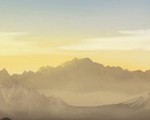
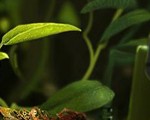
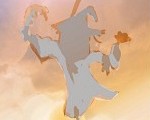

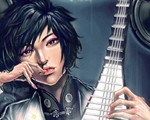
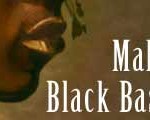
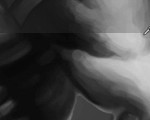
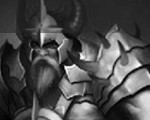
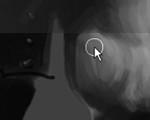
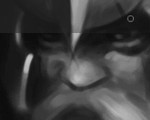

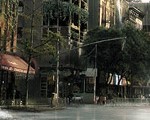

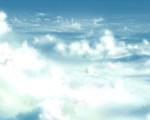
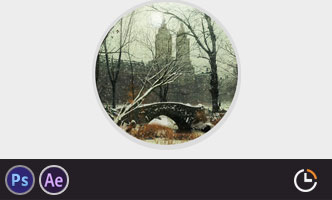
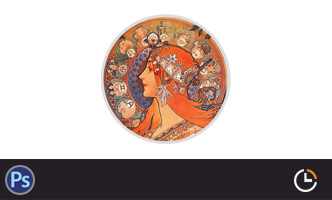

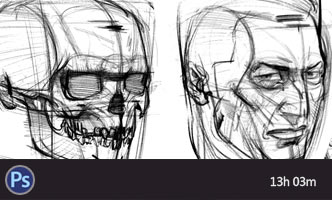
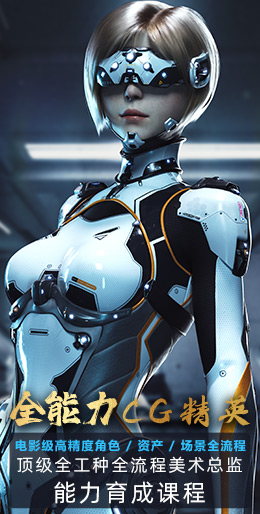




0回复蒸汽朋克村制作流程"